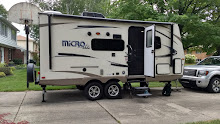Days 5 and 6: Day 5 was one of travel; bus, airport, plane trip, and bus when we
arrived in the city of Wuhan in the evening. For us this stay turned out to be
one of much needed rest.
 |
| Typical farmer in a typical field along the highway |
 |
| City of Wuhan from our hotel window |
On day 6 we boarded a bus for a 4 hour drive from
Wuhan to Jingzhou, a 6000 year old walled city, on the Yanghzee River. This
part of
China is humid and subtropical, though at this time of year, the temperature
was cool. This is a rice growing region and we passed many small farms with paddies
and nearby homes. Some are single family farm homes, but more often farms are
located close to communities with high rise apartments built by the government.
 |
| Farmers working along a river |
 |
| Flooded rice patties |
 |
| Field workers near the government built "Farm Houses" now typical for the region. |
 |
| These too are farm workers quarters |
 |
| Farm Village |
 |
| Small cemeteries were often snuggled between farm fields |
 |
| Approaching the Jingzou City Wall |
 |
| An open-front shoe store at the City Wall |
When we came to Jingzhou, a little hamlet of 5.6 million people, we stopped at
a wonderful museum that housed items from the Chu era (8th century BC) which
included silk artifacts, lacquer ware, pottery, sculptures and a perfectly
preserved 2000 year old man from the dynasty. So well preserved was he in the
cool mud that, when he was removed from the coffin, his skin was still damp,
they could determine his blood type and figure out what caused his death. There
still remain many tombs in the area not excavated.
 |
| The grounds of the cultural museum were quite beautiful! |
 |
| Artifacts found near or in the tomb. |
We then spent time on the ancient city wall. The
ancient wall was originally built in the Spring and Autumn Period over 2,000
years ago. The brick wall we can see now was rebuilt in Ming and Qing
dynasties. However a range of 50 meters was built since the Three Kindoms
(220-280 A.D.). The existing wall is about 3.75 km long from east to west, 1.2
km from wide north to south and nine meters high, with perimeter about 10.28
kilometers. It covers an area of 4.5 square kilometers. The wall has
nine gates (six are old city gates and the other three are new) and 2 gate
towers. Jingzhou City Wall is divided into three parts. The outside part is a
city moat; the middle part is brick wall and the inner part is earth wall. The
city moat has a total length of 10,500 meters, and is 30 meters in width and 4
meters in depth. It connects Taihu Lake in the west and Changhu Lake in the
east.
 |
Looking from atop the city wall, the main approach to enter the ancient city.
Most of Jingzhou is outside the city wall now. |
 |
| Wedding photo or fashion shoot? We'll never know. |
 |
Looking through an embrasure, an opening in the battlement that allows
weapons to be fired while the shooter is protected by the wall. |
 |
A small gate through the wall that is accessible only by boat.
There are six original gates and three modern gates. |
 |
A model of the remaining ancient city, which is surrounded by water.
The model is in the Bingyang building on the wall. |

























No comments:
Post a Comment